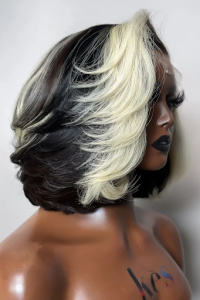The Ultimate Guide to Choosing the Perfect Running Shoes for Every Athlete

Selecting the appropriate running shoes is crucial for athletes seeking to enhance their performance and reduce the risk of injury. The wide variety of options available can be overwhelming, making it essential to understand what to look for when choosing the perfect pair.
Understanding Your Foot Type
Athletes should first consider their foot type, as this affects the shoe design most suitable for them. There are generally three foot types: neutral, overpronated, and underpronated. Neutral feet have an efficient way of contacting the ground, while overpronated feet roll inward excessively, often resulting in flat arches. Underpronated, or supinated, feet typically have a higher arch and do not roll inward sufficiently.
The Importance of Shoe Fit
Proper fit is vital in running shoes selection. Shoes that are too tight can lead to discomfort and blistering, while overly loose shoes may cause instability and increase the risk of tripping. Athletes should ensure that there is enough room in the toe box, a snug fit at the heel, and minimal slippage during movement.
Types of Running Shoes
The type of running shoe needed can vary based on the activity and surface. Road running shoes are typically designed for pavements and packed surfaces, while trail running shoes provide stability and traction on uneven and loose terrain. Cross-training shoes are versatile options suitable for gym workouts and varied environments.
Cushioning and Support
Cushioning is another significant factor to consider. Shoes with ample cushioning can provide comfort for long-distance runners, whereas lighter models might be preferred for speed-focused athletes. The level of support needed also depends on the foot type and individual needs of the athlete, with some requiring motion control features to address excessive pronation.
Weight of the Shoe
While it may not seem as important, the weight of a shoe can significantly impact athletic performance. Lightweight shoes may improve speed and agility, making them ideal for competitive runners. However, heavier shoes often provide more cushioning and support, which could be advantageous for longer runs or rugged terrain.
Durability and Quality
Investing in a durable and high-quality pair of running shoes can offer athletes long-term performance and comfort benefits. Shoes constructed with tough materials and reinforced stitching tend to withstand wear and tear better than lower-quality options.
Breathability
Breathable materials can enhance comfort by allowing air to circulate within the shoe, keeping feet dry and cool. This feature is particularly important for athletes training in hot and humid conditions.
Testing the Shoes
Before purchasing, athletes should test shoes to ensure suitability. This might involve a brief jog or walk within the store to assess comfort and fit. In some cases, brands might offer a limited return policy that allows for at-home testing.
Price Considerations
While premium models often come with high price tags, there are many quality options available within budget ranges. Athletes should weigh the benefits of advanced technologies against their budget to find a shoe that offers the best value for money.
Brand Reputation
Choosing shoes from reputable brands can provide assurance of quality and reliability. Brands specializing in athletic gear understand the specific needs of athletes and often offer advanced features based on extensive research and development.
Women’s Running Shoes
Women’s running needs can differ slightly from men’s, with considerations like narrower heel areas and specific support requirements. Brands often design women’s models with these differences in mind to ensure a better fit and comfort for female athletes.
Tips for Beginners
For those new to running, it is essential to start with a pair that offers adequate support and comfort to reduce the risk of injury. Consulting a specialist in a running store can provide beginners with insights tailored to their specific needs.
Mistakes to Avoid
Some common mistakes include buying shoes based solely on appearance, neglecting foot size changes, and failing to replace worn-out shoes, which can lead to discomfort and increased injury risks.
Final Thoughts
Selecting the right running shoe involves careful consideration of several factors, including foot type, intended use, and personal preference. By taking the time to evaluate these aspects, athletes can enjoy enhanced performance and increased comfort during their activities.






